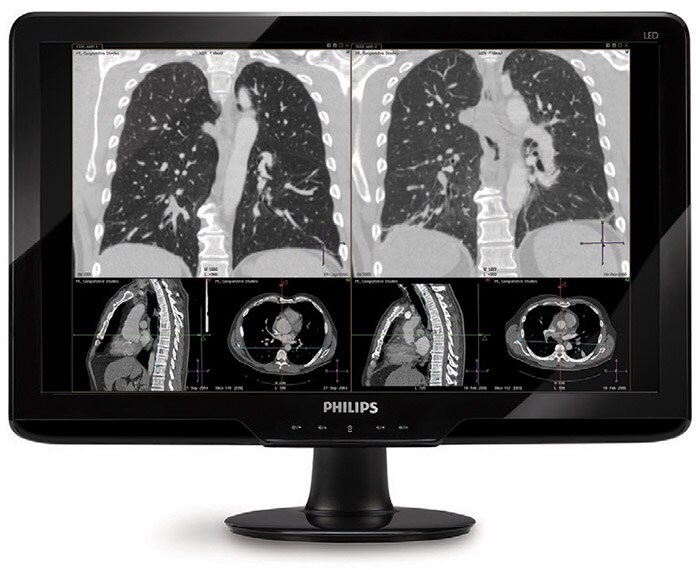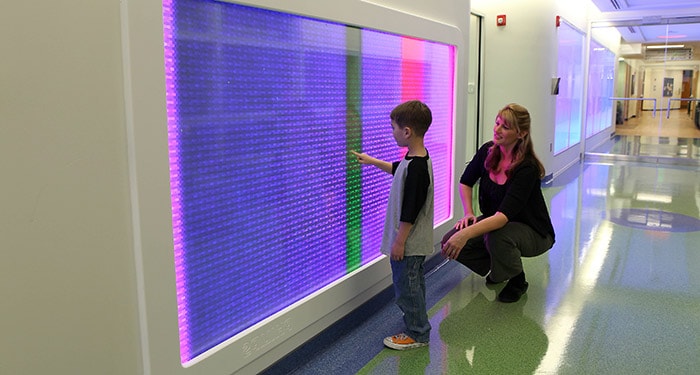Integrating IT at UCHealth – Unified PACS, unified vision.
UCHealth consolidates PACS system, projected for $11.1 million costs savings and enhanced patient care
This rapid growth resulted in a dizzying array of legacy systems including three radiology PACS and four cardiology PACS. Realizing that IT integration could result in cost-savings and workflow efficiencies and improve patient care, UCHealth sought to consolidate and standardize its EHR, voice recognition system, and PACS. It chose Philips IntelliSpace PACS for radiology and Philips Xcelera for cardiology, with plans to migrate to IntelliSpace Cardiovascular in the future.
In 2012, University of Colorado Hospital merged with Poudre Valley Health System and began a lease with Memorial Health System, creating UCHealth, an Integrated Delivery Network that includes five hospitals across three regions (northern Colorado, metro Denver, and southern Colorado) and more than 100 ambulatory locations across Colorado, southern Wyoming, and western Nebraska.
The Philips IntelliSpace PACS operate on a tiered fee-per study basis, allowing the PACS to grow as UCHealth does. In addition, virtual servers help control costs. In total – as a result of consolidating PACS with a single vendor, reducing software and the associated maintenance costs, choosing an efficient system, and using a fee-per-study model – UCHealth estimates a savings of $6.5 million in the first five years in radiology, and $4.6 million in cardiology. Matt Riley, systems architect, points out that consolidation on Philips IntelliSpace PACS and Xcelera also reduces the burden on the IT department. “Very soon we will have two platforms and two servers – one for radiology and one for cardiology” he says. “We’ve also standardized application configurations and processes. Now we’re able to adapt to new growth without adding staff.”
From a health system perspective, any patient should be able to get identical, high quality, standardized care any place in the system – and PACS is part of that.”
Peter Sachs
MD, Associate Professor of Radiology, University of Colorado School of Medicine, Section Chief of Cardiothoracic Imaging and Vice Chair of Informatics, Department of Radiology, and Radiology Physician Informaticist, UCHealth
PACS key to integrated patient experience
One goal of the PACS project was for patients to experience UCHealth as a single entity, rather than a collection of disparate parts. Peter Sachs, MD, Associate Professor of Radiology, University of Colorado School of Medicine, Section Chief of Cardiothoracic Imaging and Vice Chair of Informatics, Department of Radiology, and Radiology Physician Informaticist, UCHealth, explains that image accessibility, regardless of location, is one of the ways that patients experience a unified health system. “From a health system perspective, any patient should be able to get identical, high quality, standardized care any place in the system – and PACS is part of that,” he says. “Standardizing imaging protocols, workflow, and the structure and content of reports is essential, as is making sure clinicians can see prior studies and historical records.” Now that six million radiology images and 30,000 cardiology studies have migrated to Philips IntelliSpace PACS and Xcelera, radiologists and cardiologists can view a patient’s prior images as well as new studies on a single patient timeline, regardless of where those images were acquired in the health system.
Epic connection
IUCHealth’s IT strategy also included standardizing on Epic EHR. Hess states that in addition to functionality and workflow, connection with Epic was another reason for choosing Philips. “Interfacing the Philips PACS with the EHR enables one-click access between the systems,” he says. “Radiologists and cardiologists have access to the full patient history contained in the EHR plus clinical tools, and clinicians have the opportunity to review images acquired anywhere in the health system using the EHR online environment.”
Looking Forward
UCHealth is now well positioned for future expansion. Plans for the future are for inclusion of visible light images in the IntelliSpace PACS, mobility initiatives, and advanced visualization via IntelliSpace Portal.

More radiology case studies

Children’s Hospital of Georgia - An imaging suite designed by patients and their families The Radiology Department at the Children’s Hospital of Georgia (CHOG), an Augusta University Health (AU Health) hospital, hadn’t been renovated in 16 years and was struggling with dated—often analogue—technology, inefficient workflows and a drab, static environment.

Increasing Ultrasound efficiency at Lakeland Regional Learn how Lakeland Regional Medical Center increases efficiency in the Emergency Department for ultrasound services with Philips healthcare consulting team.

Design thinking aids ED at Florida Hospital for Children Learn how Philips used design thinking in healthcare to help Florida Hospital for Children create a non-threatening Emergency Department.



Innovation Matters blog
How an athlete’s passion helps him live with COPD
Will 2017 be a turning point in the war against cancer?
Charting the path of the Cancer Moonshot
Putting tumors in the picture: the power and evolution of image guided therapy
News
Read more